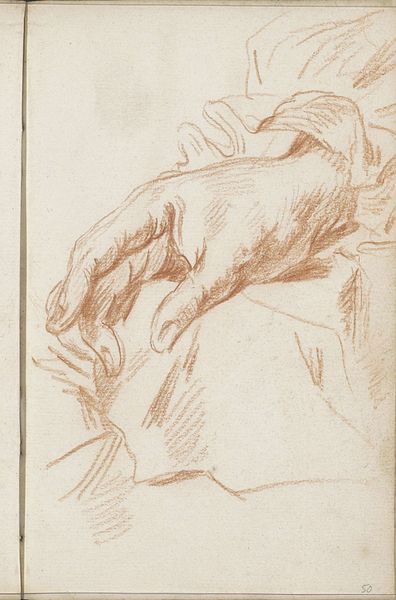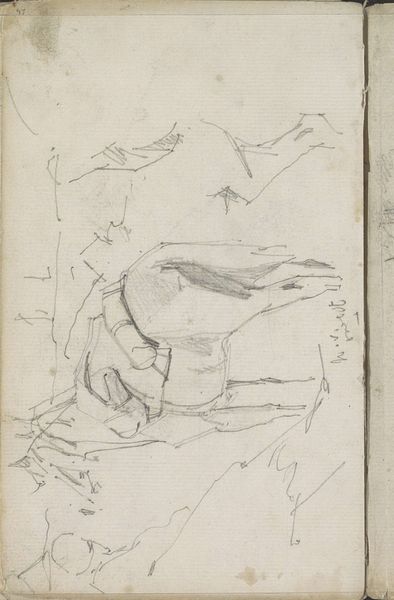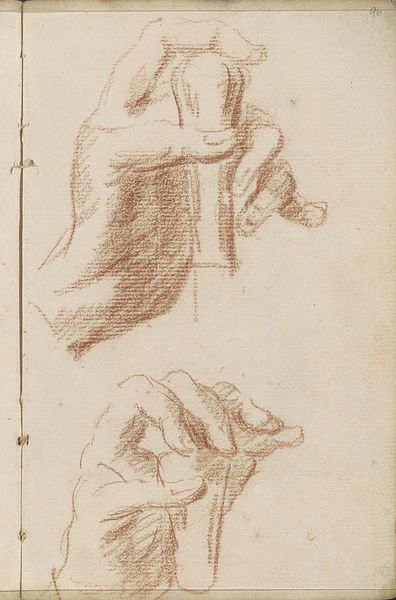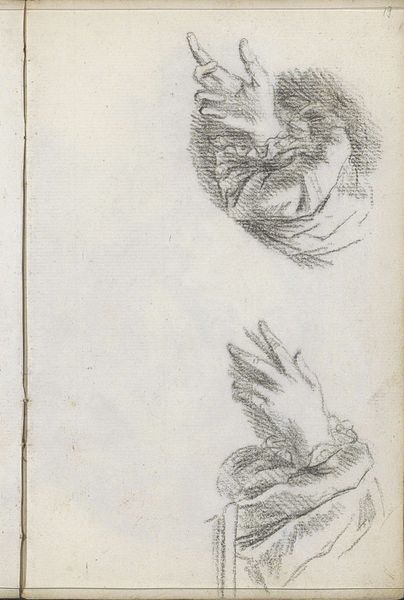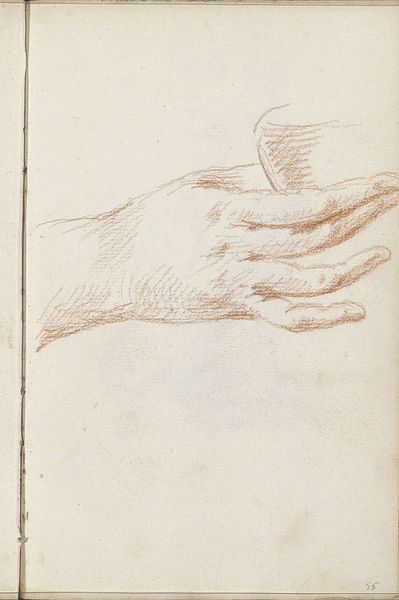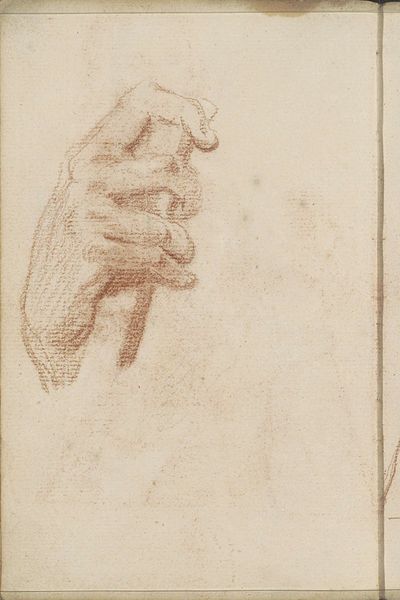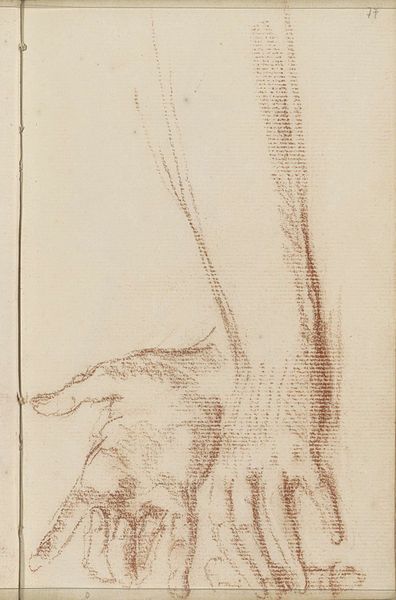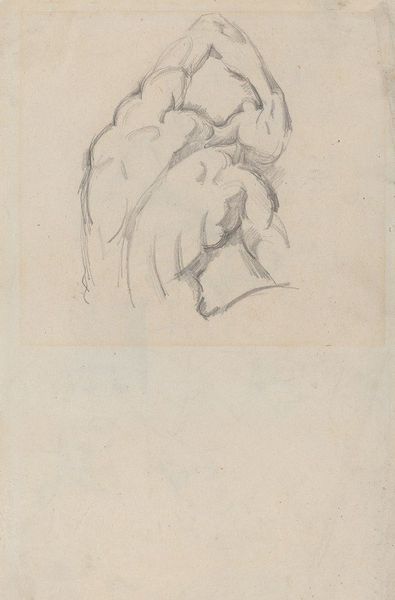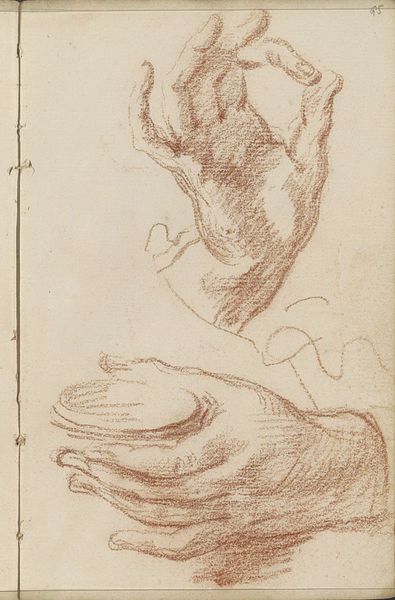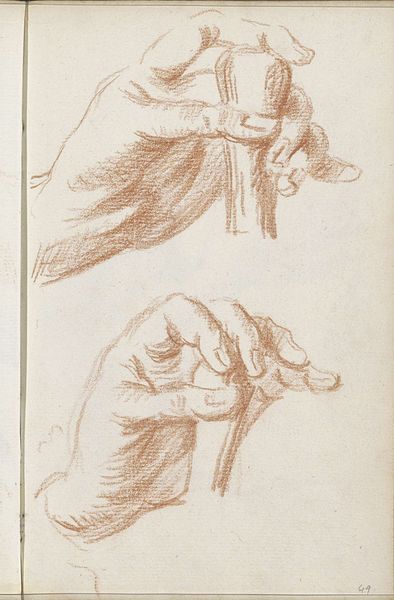
drawing, paper, pencil
#
portrait
#
drawing
#
book
#
pencil sketch
#
paper
#
form
#
pencil
#
line
#
pencil work
Copyright: Rijks Museum: Open Domain
Curator: I find myself drawn to the tentative nature of the line work in this sketch. There is something fragile, yet determined in its execution. Editor: Well, it's undeniably modest—a humble sketch rendered in pencil on paper by Petrus Johannes van Reysschoot dating from sometime between 1710 and 1772, aptly titled "Two Hands Leafing Through Books". What captures your attention here beyond the understated media? Curator: It’s the dynamism captured in stillness. Look at the tension in the fingers, the implied weight of the unseen pages. It speaks to the active relationship between the reader and the text. Consider the implications within a structuralist framework. The hand is a signifier for understanding, and the book a repository of knowledge. Editor: True, but the simplicity of materials is crucial. We have pencil, a readily available material that allows for quick articulation of an idea and a connection to something reproducible. The drawing paper's texture also impacts the rendering – affecting the hand, the maker. Does the roughness resist the line? Or encourage softer values? This tension plays into how a mass audience understands what reading represents in that moment. The context becomes the message. Curator: Ah, but the hands are deliberately unrefined, incomplete. Note how the line becomes fragmented and calligraphic, losing itself in tonal fields—foregrounding form, line and composition over representational precision. Van Reysschoot presents not mere hands, but archetypes in the act of knowledge absorption. Editor: I concur it’s hardly photorealistic, but it is also likely a study in support of another more highly finished composition where material would also shift toward another media for its finish. Understanding drawing practice then sheds a light on studio craft culture – we see more than isolated "genius." Curator: In viewing this study, the conceptual simplicity becomes its strength. The sparseness of line work forces us to question our own assumptions concerning the hand, the book and the exchange enacted. Editor: Seeing its immediacy, I'm aware how acts of sketching allow access to thinking-in-progress—unearthing the historical roots and material conditions surrounding image-making. A tangible link to the labor embedded in creativity. Curator: A fitting observation! I’m content with having considered it today from the vantage of how deceptively sophisticated line work speaks across temporal and theoretical bounds. Editor: And from where I sit, these wisps of graphite remind me that art can reveal profound implications through the simplest tools – democratizing making at the root.
Comments
No comments
Be the first to comment and join the conversation on the ultimate creative platform.
